Search results for: 'axe'
-
 Early flat axe from Judea
Early flat axe from JudeaCompact bronze axe head from Early Bronze Age. The piece was found in Judea.
Price: on request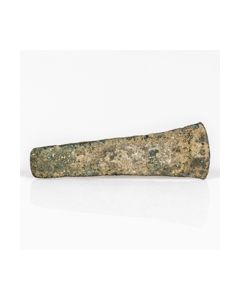 Early flat axe from Judea
Early flat axe from JudeaTrapezoidal axe head from Early Bronze Age. The piece was found in Judea.
Price: on request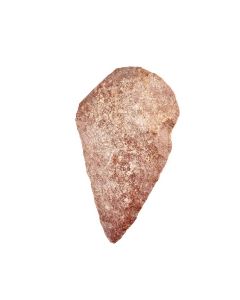 Paleolithic hand axe
Paleolithic hand axeThe universal tool of the older Stone age. It could be used as a borer or a cutter. Approx. 500,000 to 200,000 BC.
Price: on request Rectangular axe head
Rectangular axe headDünnnackiger Beilkopf der Trichterbecherkultur, Dolmenzeit bis Ganggrabzeit. Sehr schön bearbeiteter grauer Flint.
Price: on request Neolithic axe head
Neolithic axe headWunderbar erhaltene Steinaxt der Jüngeren Trichterbecherkultur. Aus fein bearbeitetem rötlich-braunen Felsgestein. In museumswürdigem Zustand.
Price: on request Large neolithic axe head
Large neolithic axe headA tool from the Early Neolithic of Europe. Nicely polished and impressive by its size and weight.
Price: on request Powerful and heavy work axe
Powerful and heavy work axeRare and impressively large and heavy tool from the New Stone Age. The axe type comes from Jutland, Denmark.
Price: on request Large prehistoric hand axe
Large prehistoric hand axeMassive Paleolithic stone tool. It was the universal tool of the older Stone age and could be used as a borer or a cutter. From a Swiss museum collection. Found in Algeria, North Africa.
Price: on request Huge Paleolithic hand axe
Huge Paleolithic hand axePrehistoric stone tool. It was the universal tool of the older Stone age and could be used as a borer or a cutter. From a Swiss museum collection. Found in Morocco, North Africa.
Price: on request Large paleolithic hand axe
Large paleolithic hand axePrehistoric stone tool made of wonderfully banded stone. It was the universal tool of the older Stone age and could be used as a borer or a cutter. From a Swiss museum collection. Found in Morocco, North Africa.
Price: on request Six neolithic axe heads
Six neolithic axe headsGroup of six nicely crafted jadeite tools. From Stone Age southern France.
€600 Large Paleolithic hand axe
Large Paleolithic hand axePrehistoric stone tool. It was the universal tool of the older Stone age and could be used as a borer or a cutter. From a Swiss museum collection. Found in Foggaret Ezzaouia, Algeria, North Africa.
Price: on request Large Paleolithic hand axe
Large Paleolithic hand axePrehistoric stone tool. It was the universal tool of the older Stone age and could be used as a borer or a cutter. From a Swiss museum collection. Found in Erg Mehedjibat, Algeria, North Africa.
Price: on request Large Paleolithic hand axe
Large Paleolithic hand axePrehistoric stone tool. It was the universal tool of the older Stone age and could be used as a borer or a cutter. From a Swiss museum collection. Found in Foggaret Ezzaouia, Algeria, North Africa.
Price: on request Bronze Age axe head
Bronze Age axe headVery well preserved axe head. Late Bronze Age, 10th to 9th cent. BC.
Price: on request Bronze Age axe head
Bronze Age axe headVery well preserved axe head. Late Bronze Age, 10th to 9th cent. BC.
Price: on request Bronze Age axe head
Bronze Age axe headVery well preserved axe head. Late Bronze Age, 10th to 9th cent. BC.
Price: on request Luristan battle axe with eyes
Luristan battle axe with eyesAxe head originating from the Luristan region during Early Bronze Age. The piece is decorated with eyes to form a stylized bird's head.
€740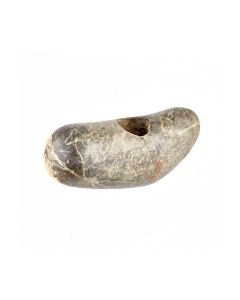 Finely polished hammer axe
Finely polished hammer axeThe compact axe head is made of beautiful and polished green-black stone with white veins. Late Neolithic to Copper Age.
Price: on request Hand axe from Galilee
Hand axe from GalileeBig paleolithic hand axe. The universal stone age tool could be use as a borer or cutting tool. Around 500,000 to 200,000 BC.
Price: on request Bronze socketed axe head
Bronze socketed axe headKörper mit ovalem Querschnitt und charakteristischer Öffnung am Nacken, für die einfache Schäftung des Beilkopfes. Derartige Beile wurden in der späten Bronzezeit als Arbeitsgeräte vielfältig eingesetzt. Spannendes Belegstück.
Price: on request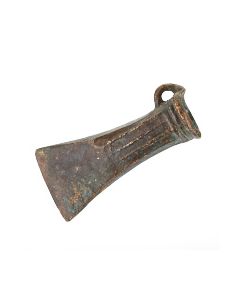 Decorated socketed axe head
Decorated socketed axe headBronzezeitlicher Beilkopf mit ovalem Querschnitt. Schöne Verzierungen an den Seiten. Ringöse zur Befestigung. Späte Bronzezeit.
Price: on request Impressive neolithic battle axe
Impressive neolithic battle axeZeugnis der perfektionierten Steinbearbeitung in der Endphase des Neolithikums in Mitteleuropa. Aus hartem Felsgestein gearbeitet. 2800 bis 2200 v. Chr.
Price: on request Late neolithic axe head
Late neolithic axe headKlinge eines dünnblattigen Dicknackenbeils. Trapezförmiger Körper aus feinem grauen Flint. Ganggrabzeit bis Dolchzeit.
Price: on request Paleolithic hand axe of Homo Erectus
Paleolithic hand axe of Homo ErectusBig hand axe from Niger. Made during the Old Stone Age, around 200,000 years ago. The universal stone age tool could be use as a borer or cutting tool.
Price: on request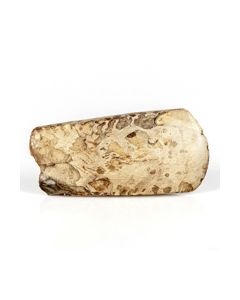 Neolithic thin butted axe head
Neolithic thin butted axe headAxe from the Early Neolithic is made of beautiful reddish brown flint with inclusions. Found in Northern Germany.
Price: on request Paleolithic hand axe or borer
Paleolithic hand axe or borerPrehistoric stone tool. It was the universal tool of the older Stone age and could be used as a borer or chisel. From a Swiss museum collection. Found in the Algerian Sahara desert.
Price: on request Hammer axe of the Single Grave culture
Hammer axe of the Single Grave cultureGorgeous axe head made of polished dark rock. Made by the Single Grave culture and found in northern Germany.
Price: on request Neolithic axe mounted for museum display
Neolithic axe mounted for museum displayThe stone tool is from the European Neolithic. A special feature is the museum-quality custom made shaft which gives a great impression of the tool's former mounting.
Price: on request Neolithic axe head with through hole
Neolithic axe head with through holeFinely crafted tool from the New Stone Age of Europe. Made from greenish grey rock. With a through hole at the neck as a remarkable feature.
Price: on request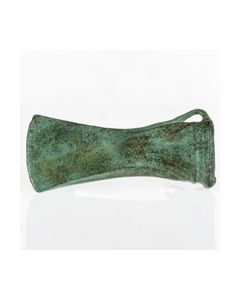 Socketed axe head from Southern Germany
Socketed axe head from Southern GermanyA typical bronze tool of the late Urnfield culture or early Hallstatt culture. It was found near Regensburg in Southern Germany by a voluntary archaeologist.
Price: on request Polished stone age axe head
Polished stone age axe headThe small tool from the younger Stone Age has a nicely polished surface revealing the beautiful black stone it is made of. Approx. 4200 to 2400 BC.
Price: on request Bronze Age socketed axe head
Bronze Age socketed axe headIn dieser Ausführung seltener Typ eines Tüllenbeils. Schönes Belegexemplar aus einer gut geführten und breit angelegten Sammlung bronzezeitlicher Beile.
Price: on request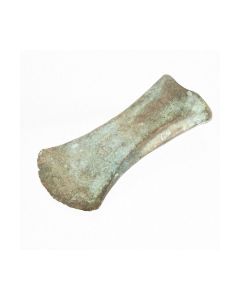 Elegantly shaped socketed axe head
Elegantly shaped socketed axe headElegant geformter Beilkopf aus der späten Bronzezeit Europas. Es gehört zu den Tüllenbeilen. Dessen großer Vorzug besteht gegenüber früheren Beiltypen in der einfachen Schäftung mittels der Öffnung am Nacken.
Price: on request Bronze Age socketed axe head
Bronze Age socketed axe headKörper mit ovalem Querschnitt und charakteristischer Öffnung am Nacken, für die einfache Schäftung des Beilkopfes. Derartige Beile wurden in der späten Bronzezeit als Arbeitsgeräte vielfältig eingesetzt. Spannendes Belegstück.
Price: on request Rare compact socketed axe head
Rare compact socketed axe headSeltene Variante, die einen besonders massiven Eindruck macht und damit für den kraftvollen Arbeitseinsatz geeignet sein dürfte. Interessantes Exemplar aus der späten Bronzezeit Europas.
Price: on request

